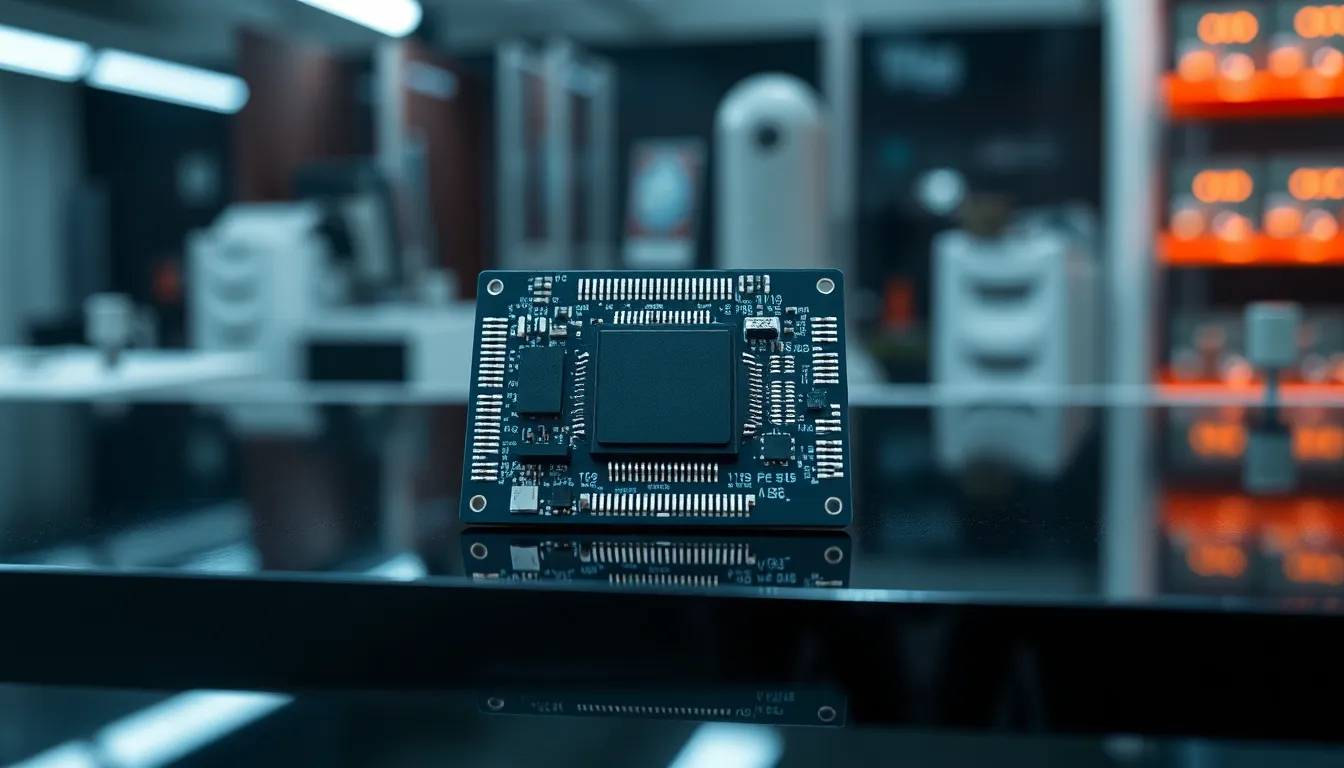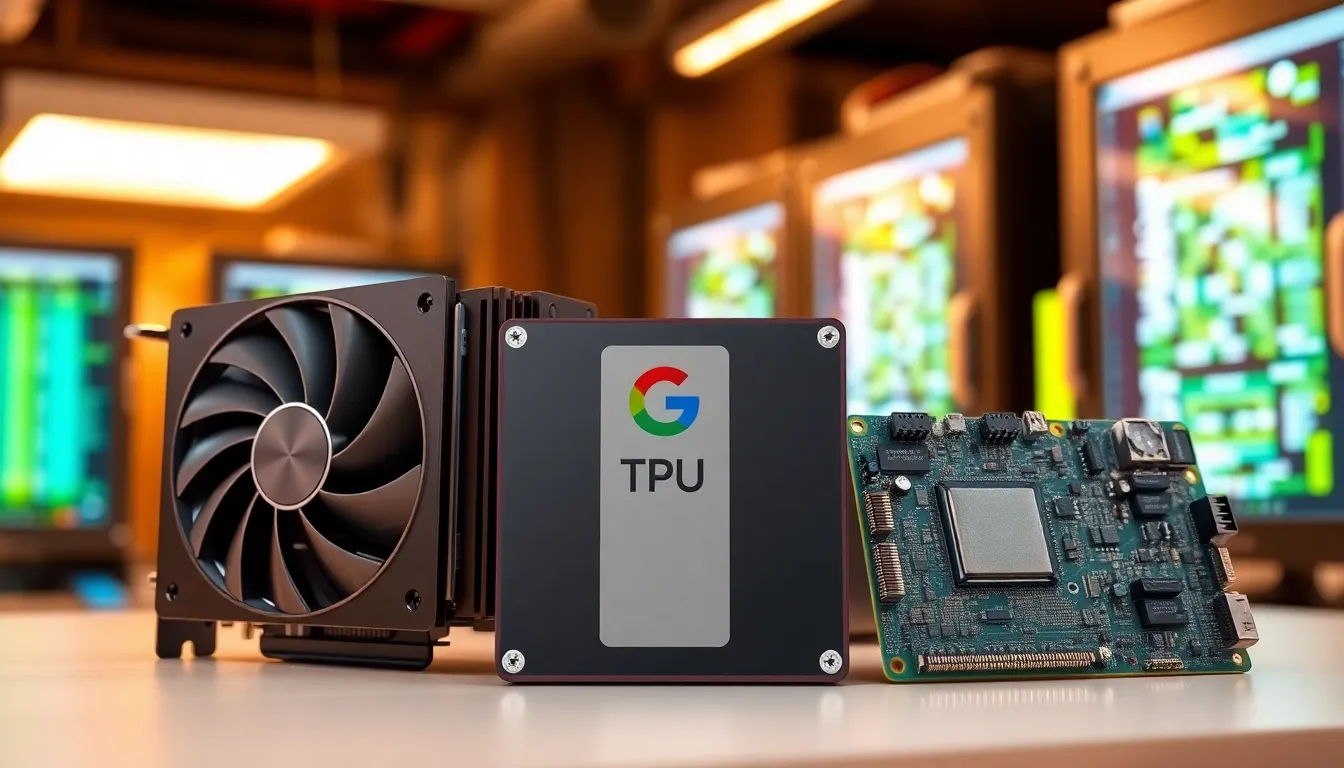In a world where technology evolves faster than a cat video can go viral, AI chipsets are the unsung heroes powering this digital revolution. These tiny powerhouses are like the brainy sidekicks of your favorite superhero, enabling everything from self-driving cars to smart home devices. If you thought your smartphone was impressive, wait until you see what these chipsets can do!
Table of Contents
ToggleOverview of AI Chipsets
AI chipsets play a pivotal role in modern technology by enhancing computational efficiency and processing speed. These specialized processors are designed to handle the intense workloads associated with artificial intelligence applications. Various industries rely on AI chipsets to enable advancements in machine learning, deep learning, and neural networks.
Companies like NVIDIA and Google are at the forefront of AI chipset development, creating products that power everything from cloud computing systems to autonomous vehicles. Performance metrics demonstrate significant improvements, with some chipsets achieving up to 20 times faster processing than traditional CPUs for certain AI tasks.
Key features of AI chipsets include parallel processing capabilities and optimized architectures. Parallel processing allows multiple tasks to be executed simultaneously, enhancing the overall efficiency of AI applications. Optimized architectures enable these chipsets to process large datasets quickly, making them ideal for applications that require real-time decision-making.
The integration of AI chipsets into consumer electronics is increasingly prevalent. Smart home devices now utilize these chipsets to perform complex tasks such as voice recognition and predictive analytics. Additionally, self-driving cars depend on AI chipsets to analyze sensor data and make instantaneous driving decisions.
As the demand for AI technology continues to rise, the significance of AI chipsets only grows. Future innovations are likely to focus on energy efficiency and improved performance, ensuring that these chipsets remain essential in the digital landscape. In summary, AI chipsets are integral components driving the advancement of intelligent systems across various sectors.
Types of AI Chipsets
Several types of AI chipsets exist, each optimized for specific workloads in artificial intelligence.
GPU-Based Chipsets
GPU-based chipsets excel in parallel processing. These chipsets handle multiple tasks simultaneously, making them ideal for machine learning and deep learning applications. Companies like NVIDIA produce GPUs that outperform traditional CPUs in AI tasks, achieving processing speeds up to 20 times faster. Developers often prefer these chipsets for tasks involving large datasets and complex algorithms. Popular frameworks such as TensorFlow and PyTorch optimize their operations to leverage the strengths of GPU-based architectures.
TPU-Based Chipsets
TPU-based chipsets, developed by Google, focus on artificial intelligence tasks, particularly machine learning workloads. Designed to enhance speed and efficiency, TPUs significantly reduce processing time for training models. They outperform GPUs in both performance and energy efficiency for specific tasks. Organizations looking for optimized solutions in cloud environments often rely on these chipsets for enhanced computation. TPUs enable rapid deployment of AI models, facilitating advancements across various applications.
FPGA-Based Chipsets
FPGA-based chipsets provide flexibility through hardware reconfiguration. These chipsets allow developers to customize their architecture, tailoring it to specific AI applications. Application fields, such as telecommunications and automotive, benefit from the adaptable nature of FPGAs. Performance optimization is achievable by reallocating resources for various tasks. Companies using FPGA-based solutions witness improved processing times and energy savings, establishing a competitive edge in AI development.
Key Features of AI Chipsets
AI chipsets possess several critical features that enhance their performance and functionality across various applications.
Performance Metrics
Performance metrics highlight the processing capabilities of AI chipsets. For instance, NVIDIA’s GPUs outperform traditional CPUs by achieving processing speeds that are up to 20 times faster for specific tasks. Such performance allows for real-time data analysis and quick decision-making in complex scenarios. Metrics like FLOPS (Floating Point Operations Per Second) measure the chipsets’ ability to handle large datasets efficiently, making them indispensable in applications such as deep learning and neural networks.
Energy Efficiency
Energy efficiency represents a key advantage of modern AI chipsets. TPU-based chipsets from Google, specifically engineered for machine learning workloads, offer superior performance while consuming less power. Such efficiency leads to reduced operational costs in cloud environments. Moreover, as the demand for sustainable technology rises, optimizing energy use becomes essential for both manufacturers and consumers. Utilizing AI chipsets promotes environmentally friendly practices without sacrificing performance.
Scalability
Scalability is crucial for the adaptability of AI chipsets across various industries. FPGA-based chipsets provide developers with the flexibility to reconfigure hardware for specific applications. This adaptability supports a range of projects, from automating processes in manufacturing to enhancing features in consumer electronics. Increased scalability ensures that businesses can upgrade or modify their AI solutions easily as technology evolves, maintaining relevance in a fast-paced digital landscape.
Applications of AI Chipsets
AI chipsets find extensive applications across various domains, enhancing capabilities in numerous fields. Their innovative designs allow for optimized performance in demanding tasks.
Machine Learning
High-performance AI chipsets significantly accelerate machine learning processes. Devices like GPUs and TPUs are tailored for training complex models with large datasets. Companies such as NVIDIA leverage GPU architectures to deliver performance improvements of up to 20 times compared to traditional CPUs. Machine learning algorithms rely on these chipsets to process vast amounts of data quickly, facilitating real-time insights and decision-making. Increased efficiency not only enhances applications in industries like finance and healthcare but also advances research in scientific fields.
Natural Language Processing
Natural language processing applications benefit greatly from AI chipsets’ specialized architectures. Chipsets designed for this domain enable faster processing of large volumes of text data. AI-powered systems, including chatbots and virtual assistants, leverage TPU and GPU capabilities to improve response times and accuracy. By utilizing AI chipsets, developers can create more sophisticated language models that understand nuances in human communication. Enhanced performance leads to better user experiences in digital interactions, making technology more intuitive and accessible.
Image Recognition
Image recognition technology leverages AI chipsets for efficient analysis of visual data. These chipsets facilitate rapid processing of high-resolution images, enabling tasks such as object detection and facial recognition. Companies harness the power of GPUs to train deep learning models that enhance accuracy and speed in real-world applications. AI chipsets streamline the workflow in sectors like security and retail, allowing for the deployment of advanced monitoring systems. Improved image recognition capabilities also support innovations in autonomous vehicles, where real-time environment assessment is critical.
Conclusion
AI chipsets are revolutionizing technology by providing the necessary power and efficiency for advanced applications. Their ability to handle complex tasks in real-time is reshaping industries and enhancing user experiences. As companies continue to innovate in this space the future of AI chipsets looks promising.
With a focus on energy efficiency and performance improvements these chipsets will play an even more significant role in driving the next wave of technological advancements. As reliance on AI grows across various sectors the importance of these specialized chipsets cannot be overstated. They are not just tools but essential components in the evolution of intelligent systems.








